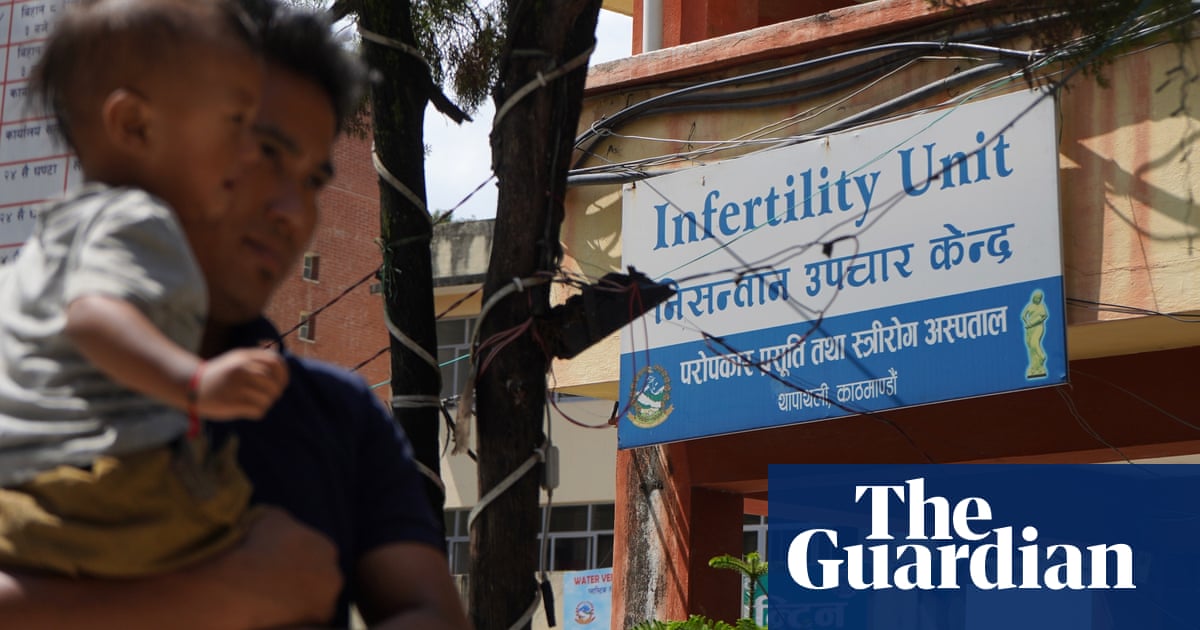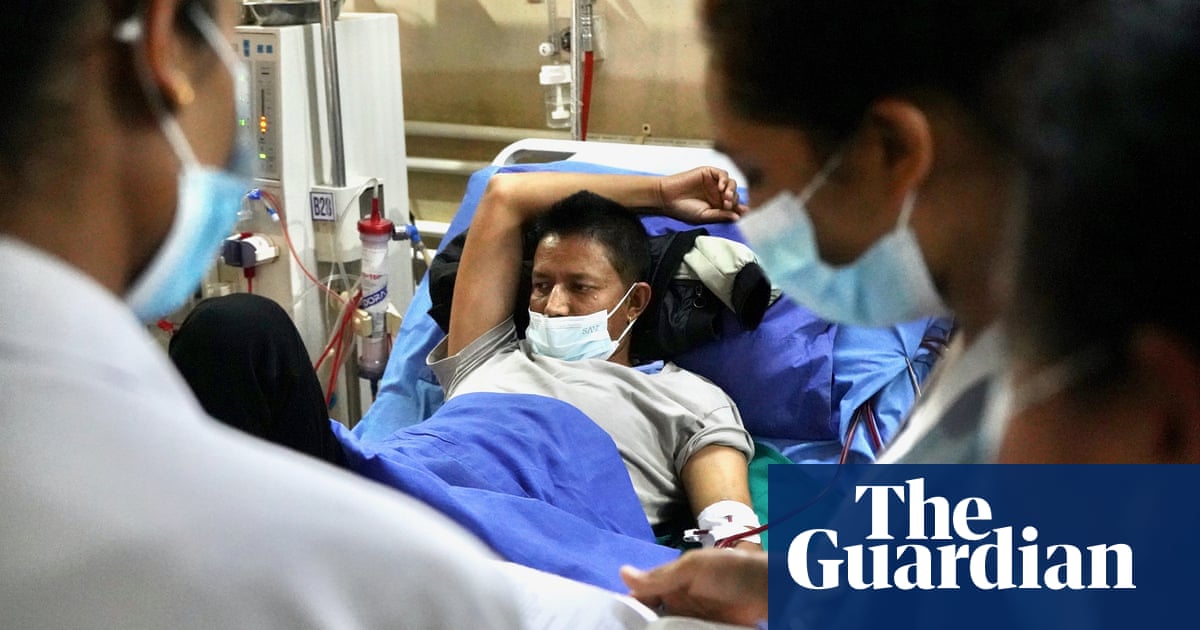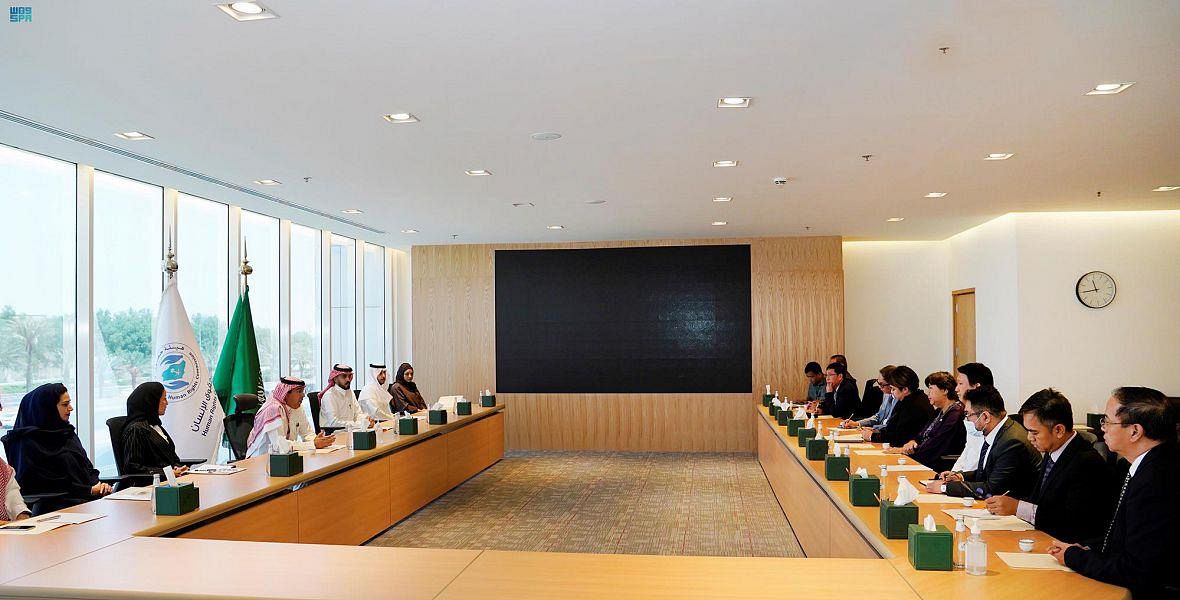
On a cluster of metal benches outside the infertility unit at Paropakar Maternity and Women’s hospital in Kathmandu, a dozen married couples sit in hope and fear. They have come from across Nepal, but many share something in common; the husband has spent years working abroad, often in the Gulf.
Ramesh* says he had no choice but to leave for work overseas to earn money for his extended family, but it has come at a price: a family of his own. He and his wife, Jyoti, had a daughter shortly after they married, but then he went to work as an electrician in Saudi Arabia for 16 years. Despite regular visits home, they have been unable to have another child.
Ramesh believes the years of working on construction sites in Saudi Arabia’s severe heat may have played a part. “The doctor told me my semen count may be too low to have a baby. It might be due to the temperatures there,” he says.
The couple have spent six years and 500,000 rupees (£3,080) visiting fertility clinics across the capital and say they are tired of answering questions from friends and family about why they don’t have more children. “It hurts me a lot. I can’t tell them what I’m going through,” says Jyoti.
On another bench nearby, Dorje, who spent 10 years working in Malaysia, seems to sum up the mood. “What’s the use of money, if you have no children?” he asks.
Doctors specialising in infertility in Nepal say they are witnessing “alarming” numbers of returnee migrant workers at their clinics and hospitals.
Dr Binita Thapa, a gynaecologist at the infertility unit, says in about 45% of cases she treats, the husband has worked in the Gulf. “It’s very disheartening to see a young man with no sperm at all … They tell us, ‘I have been [abroad] for four, five years and when I came back, I got married and now I’m not able to conceive.’ There are so many cases,” she says.
While doctors in Nepal say more research is needed to understand the links between migration and infertility, they believe the harsh and abusive living and working conditions many men endure in the Gulf, in particular the extreme summer heat, are likely to be significant factors.
Thapa says the migrant workers she sees live a “very sub-optimal” life in the Gulf, citing exposure to high temperatures, poor diet and living conditions, as well as loss of libido, as possible reasons for the difficulties many face in having children.
“If you talk about migrants working in the Gulf, their semen parameters are so bad,” says Dr Bishnu Gautam, who works in a private fertility clinic in the southern city of Butwal. About 80% of patients at his clinic have worked in the Gulf, whose fertility problems he believes may be due to stress, unhealthy lifestyles and poor living conditions.
In a study of 186 male partners of infertile couples in eastern Nepal, researchers found that 46% had worked in the Gulf, making migration by far the greatest risk factor among the participants.
The findings, researchers suggested, may be linked to “severe stress … exposure to high ambient and workplace temperature, long sexual abstinence, adverse housing and workplace situation”.
Low-wage migrant workers in the Gulf are unable to bring their wives with them because they earn far less than the minimum required for a family visa. Typically, they live in all-male labour camps, often in crowded dorms with up to 12 men to a room.
The scale of the problem is only likely to grow. Last year, a record 775,000 Nepalis left the country to work abroad (excluding those going to India), largely due to a lack of jobs at home.
However, experts say the apparently high rates of infertility among migrant workers are also because they often stay abroad for years, sometimes decades, interspersed by only short visits home. Most return for only two or three months every two years due to the terms of their visas and contracts, and because they cannot afford to take more time off work.
During their visits, many face huge family and community pressure to have a child, especially a son, says Dr Sabina Shrestha, a gynaecologist at a private hospital in Kathmandu. “They come home, they have limited time, and within that two months, they have to get pregnant. So it’s lots of stress … which is preventing them from having babies,” she says.
Doctors say many men are not even aware that their wives are most fertile for only a short period each month. Dr Sita Pokhrel, a gynaecologist and obstetrician based in the eastern city of Biratnagar, says: “They feel that if they stay for 60 days, they have 60 days to conceive. More than 90% don’t know.”
A greater concern is that migrant workers often spend a decade or more abroad. “They are missing that prime period to conceive. They have given that fertile time to staying abroad … The longer they stay away, the more problems they face,” says Thapa. In many cases, they have one child before leaving, but then struggle to conceive when they return, a condition known as secondary infertility.
Thapa is among doctors who advocate semen freezing – so that a woman can undergo artificial insemination while her husband is away – but say very few take it up due to social stigma.
“How can I explain to people that my wife got pregnant when I wasn’t at home?” says one client at the infertility unit who turned down the option. “People can count the months, you know.”
The World Health Organization estimates that one in six people of reproductive age suffer from infertility at some point in their lives. While the prevalence of infertility is similar in all parts of the world, people in developing countries suffer disproportionately due to limited access to fertility treatment and its high cost.
Paropakar Maternity and Women’s hospital offers affordable fertility treatment, with IVF costing from about 200,000 rupees (£1,230), but it is the only government-run facility in Nepal. Fees for IVF treatment at the dozens of private clinics across the country can be as high as 1,000,000 rupees making it unaffordable for many returnee migrants. Some say they have been forced to return overseas just to earn the money to pay for IVF treatment.
Sujan and Rita are also waiting for treatment outside the hospital’s infertility unit, but they know IVF is beyond their reach. After almost a decade working abroad, Sujan makes as little as 5,000 rupees a month in Nepal sewing clothes and rearing goats. The only way they could afford even the low fees for preliminary tests was to sell one of their goats.
Sujan left his wife and young daughter to work in a packaging factory in Malaysia in 2014, so that he could pay for his father’s medical bills. He would sometimes work for 15 hours a day, seven days a week, but he is still mired in debts. While he was away, tragedy struck when his daughter drowned in a swimming accident.
As the only son in his family, Sujan is desperate to have a boy of his own so “I can take my generation forward”, but the couple have tried everything – including visiting a shaman – with no success.
“If I hadn’t gone overseas, I would have had more children, but I would also have faced other problems,” he says, summing up the trap many migrant workers find themselves caught up in.
It is a story Thapa hears every day at her clinic. The toll of infertility is devastating, she says. “They’re economically drained, emotionally drained, socially drained. They’re drained in every way.”












